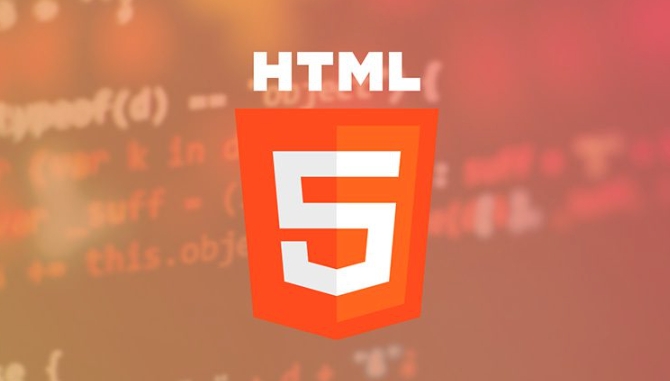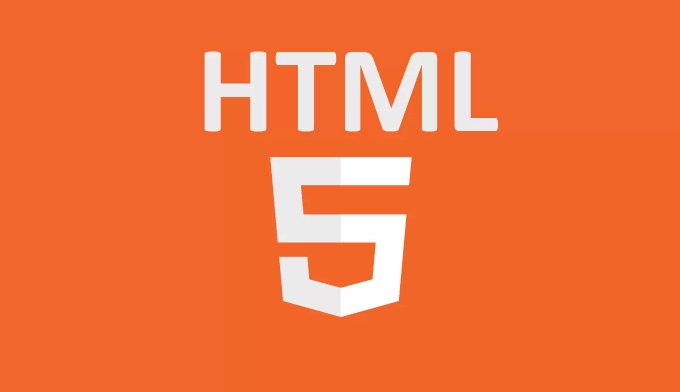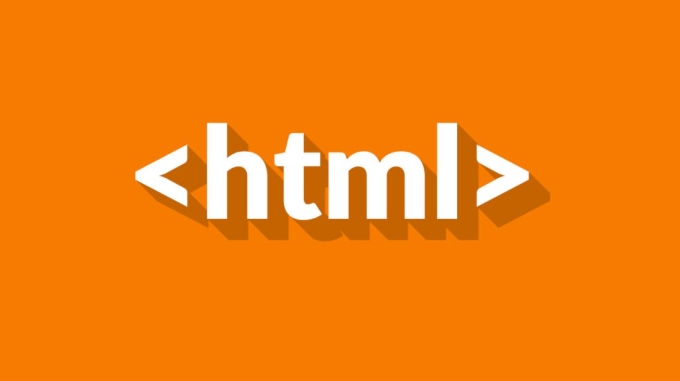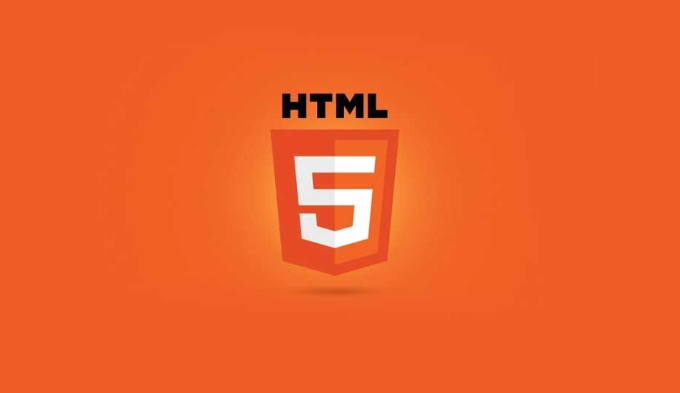 or <br> are self-closed tags; common tags include <h1> to <h6> to represent titles, <div> for grouping, <a> to define links, <ul>,
<ol>, <li> for lists. HTML attributes provide additional information and appear in the tag in the form of name-value, such as href="https://example.com" specifying the link address, src specifies the image path, alt enhances accessibility and SEO, class and id are used for CSS styles and unique identification, and data-* attributes support JavaScript interactive components; attributes must be used with corresponding tags, such as href only applies to <a>, src mainly used for
or <br> are self-closed tags; common tags include <h1> to <h6> to represent titles, <div> for grouping, <a> to define links, <ul>,
<ol>, <li> for lists. HTML attributes provide additional information and appear in the tag in the form of name-value, such as href="https://example.com" specifying the link address, src specifies the image path, alt enhances accessibility and SEO, class and id are used for CSS styles and unique identification, and data-* attributes support JavaScript interactive components; attributes must be used with corresponding tags, such as href only applies to <a>, src mainly used for  , etc., and some attributes such as required do not require assignment. Tags and attributes collaborate to build web pages with complete functions, clear structure and clear semantics. <p>
, etc., and some attributes such as required do not require assignment. Tags and attributes collaborate to build web pages with complete functions, clear structure and clear semantics. <p> </p>
<p> HTML tags and attributes are the building blocks of any webpage. Tags define the structure and meaning (semantics) of content, while attributes provide extra information about those tags. </p>
</p>
<p> HTML tags and attributes are the building blocks of any webpage. Tags define the structure and meaning (semantics) of content, while attributes provide extra information about those tags. </p>

What Are HTML Tags?
<p> HTML tags are like labels that tell the browser how to display content. They're enclosed in angle brackets and usually come in pairs: an opening tag and a closing tag. The content goes between them. </p> <p> For example:</p>
<p> For example:</p><p>This is a paragraph.</p><p> Here,
<p> is the opening tag, </p> is the closing tag, and everything in between is the content. Browsers know to display this as a paragraph. </p> <p> Some tags are self-closing, like
<p> Some tags are self-closing, like <img src="/static/imghw/default1.png" data-src="photo.jpg" class="lazy" alt="What are HTML tags and attributes explained?" > or <br> , which don't need a separate closing tag.</p><p> Common tags include:</p><ul><li> <h1> to <h6> for headings<li> <div> for grouping sections<li> <a> for links<li> <ul> , <ol> , and <li> for lists<p> Tags help structure your page so both browsers and assistive technologies (like screen readers) can understand it.</p>What Are HTML Attributes?
<p> Attributes give more details about an HTML element. They appear inside the opening tag and usually come in name-value pairs.</p><p> For example:</p><a href="https://example.com">Click here</a><p> In this case,
href is the attribute name, and "https://example.com" is its value. It tells the browser where the link should go.</p><p> Some common attributes you'll see:</p><ul><li> class – used for styling with CSS<li> id – give a unique identifier to an element<li> src – used in images to specify the file path<li> alt – provides alternative text for images<p> You can also use custom data attributes like data-role="menu" when building interactive components with JavaScript.</p>How Tags and Attributes Work Together
<p> Tags set the role of an element, and attributes fine-tune how that element behaves or looks. For instance:</p><img src="/static/imghw/default1.png" data-src="photo.jpg" class="lazy" alt="A description of the image"><p> In this example:</p><ul><li>
<img alt="What are HTML tags and attributes explained?" > is the tag — it tells the browser to show an image<li> src tells it which image to load<li> alt describes what the image shows, which helps accessibility and SEO<p> Another example:</p><input type="text" placeholder="Enter your name" required><p> Here, the
type attribute defines what kind of input it is, placeholder gives a hint to users, and required makes sure they fill it out before submitting a form.</p>
<p> You'll often see multiple attributes on one tag, especially in forms or interactive elements.</p>
When to Use Which Attribute
<p> Not every attribute works on every tag. Some are specific to certain elements. For example:</p> <ul> <li>href only works with <a> , <link> , and a few others
<li> src is used mainly with <img alt="What are HTML tags and attributes explained?" > , <script></script> , and <iframe></iframe>
<li> type appears on <input> , <button></button> , and <script></script>
<p> It's good practice to look up which attributes are valid for each tag. You can check on sites like MDN Web Docs or W3Schools.</p>
<p> Also, some attributes don't need values — like required in forms. Just having them there means "yes, turn this on."</p>
<p> That's the basic idea. You don't need to memorize all of them — just get comfortable with the most common ones. As you build more pages, it'll become second nature.</p>
The above is the detailed content of What are HTML tags and attributes explained?. For more information, please follow other related articles on the PHP Chinese website!

Hot AI Tools

Undress AI Tool
Undress images for free

Undresser.AI Undress
AI-powered app for creating realistic nude photos

AI Clothes Remover
Online AI tool for removing clothes from photos.

Clothoff.io
AI clothes remover

Video Face Swap
Swap faces in any video effortlessly with our completely free AI face swap tool!

Hot Article

Hot Tools

Notepad++7.3.1
Easy-to-use and free code editor

SublimeText3 Chinese version
Chinese version, very easy to use

Zend Studio 13.0.1
Powerful PHP integrated development environment

Dreamweaver CS6
Visual web development tools

SublimeText3 Mac version
God-level code editing software (SublimeText3)

Hot Topics
 Applying Semantic Structure with article, section, and aside in HTML
Jul 05, 2025 am 02:03 AM
Applying Semantic Structure with article, section, and aside in HTML
Jul 05, 2025 am 02:03 AM
The rational use of semantic tags in HTML can improve page structure clarity, accessibility and SEO effects. 1. Used for independent content blocks, such as blog posts or comments, it must be self-contained; 2. Used for classification related content, usually including titles, and is suitable for different modules of the page; 3. Used for auxiliary information related to the main content but not core, such as sidebar recommendations or author profiles. In actual development, labels should be combined and other, avoid excessive nesting, keep the structure simple, and verify the rationality of the structure through developer tools.
 How to group options within a select dropdown using html?
Jul 04, 2025 am 03:16 AM
How to group options within a select dropdown using html?
Jul 04, 2025 am 03:16 AM
Use tags in HTML to group options in the drop-down menu. The specific method is to wrap a group of elements and define the group name through the label attribute, such as: 1. Contains options such as apples, bananas, oranges, etc.; 2. Contains options such as carrots, broccoli, etc.; 3. Each is an independent group, and the options within the group are automatically indented. Notes include: ① No nesting is supported; ② The entire group can be disabled through the disabled attribute; ③ The style is restricted and needs to be beautified in combination with CSS or third-party libraries; plug-ins such as Select2 can be used to enhance functions.
 Implementing Clickable Buttons Using the HTML button Element
Jul 07, 2025 am 02:31 AM
Implementing Clickable Buttons Using the HTML button Element
Jul 07, 2025 am 02:31 AM
To use HTML button elements to achieve clickable buttons, you must first master its basic usage and common precautions. 1. Create buttons with tags and define behaviors through type attributes (such as button, submit, reset), which is submitted by default; 2. Add interactive functions through JavaScript, which can be written inline or bind event listeners through ID to improve maintenance; 3. Use CSS to customize styles, including background color, border, rounded corners and hover/active status effects to enhance user experience; 4. Pay attention to common problems: make sure that the disabled attribute is not enabled, JS events are correctly bound, layout occlusion, and use the help of developer tools to troubleshoot exceptions. Master this
 Configuring Document Metadata Within the HTML head Element
Jul 09, 2025 am 02:30 AM
Configuring Document Metadata Within the HTML head Element
Jul 09, 2025 am 02:30 AM
Metadata in HTMLhead is crucial for SEO, social sharing, and browser behavior. 1. Set the page title and description, use and keep it concise and unique; 2. Add OpenGraph and Twitter card information to optimize social sharing effects, pay attention to the image size and use debugging tools to test; 3. Define the character set and viewport settings to ensure multi-language support is adapted to the mobile terminal; 4. Optional tags such as author copyright, robots control and canonical prevent duplicate content should also be configured reasonably.
 Best HTML tutorial for beginners in 2025
Jul 08, 2025 am 12:25 AM
Best HTML tutorial for beginners in 2025
Jul 08, 2025 am 12:25 AM
TolearnHTMLin2025,chooseatutorialthatbalanceshands-onpracticewithmodernstandardsandintegratesCSSandJavaScriptbasics.1.Prioritizehands-onlearningwithstep-by-stepprojectslikebuildingapersonalprofileorbloglayout.2.EnsureitcoversmodernHTMLelementssuchas,
 How to associate captions with images or media using the html figure and figcaption elements?
Jul 07, 2025 am 02:30 AM
How to associate captions with images or media using the html figure and figcaption elements?
Jul 07, 2025 am 02:30 AM
Using HTML sums allows for intuitive and semantic clarity to add caption text to images or media. 1. Used to wrap independent media content, such as pictures, videos or code blocks; 2. It is placed as its explanatory text, and can be located above or below the media; 3. They not only improve the clarity of the page structure, but also enhance accessibility and SEO effect; 4. When using it, you should pay attention to avoid abuse, and apply to content that needs to be emphasized and accompanied by description, rather than ordinary decorative pictures; 5. The alt attribute that cannot be ignored, which is different from figcaption; 6. The figcaption is flexible and can be placed at the top or bottom of the figure as needed. Using these two tags correctly helps to build semantic and easy to understand web content.
 How to embed content from another site using the html iframe tag?
Jul 04, 2025 am 03:17 AM
How to embed content from another site using the html iframe tag?
Jul 04, 2025 am 03:17 AM
Use tags to embed other website content into your own web page. The basic syntax is:, you can add width, height, and style="border:none;" to control the appearance; in order to achieve responsive layout, you can set the size through percentage or use containers to combine padding and absolute positioning to maintain the aspect ratio, while paying attention to cross-domain restrictions, loading performance, SEO impact, and security policies. Common uses include embedding maps, third-party forms, social media content and internal system integration.
 HTML for email templates tutorial
Jul 10, 2025 pm 02:01 PM
HTML for email templates tutorial
Jul 10, 2025 pm 02:01 PM
How to make HTML mail templates with good compatibility? First, you need to build a structure with tables to avoid using div flex or grid layout; secondly, all styles must be inlined and cannot rely on external CSS; then the picture should be added with alt description and use a public URL, and the buttons should be simulated with a table or td with background color; finally, you must test and adjust the details on multiple clients.






